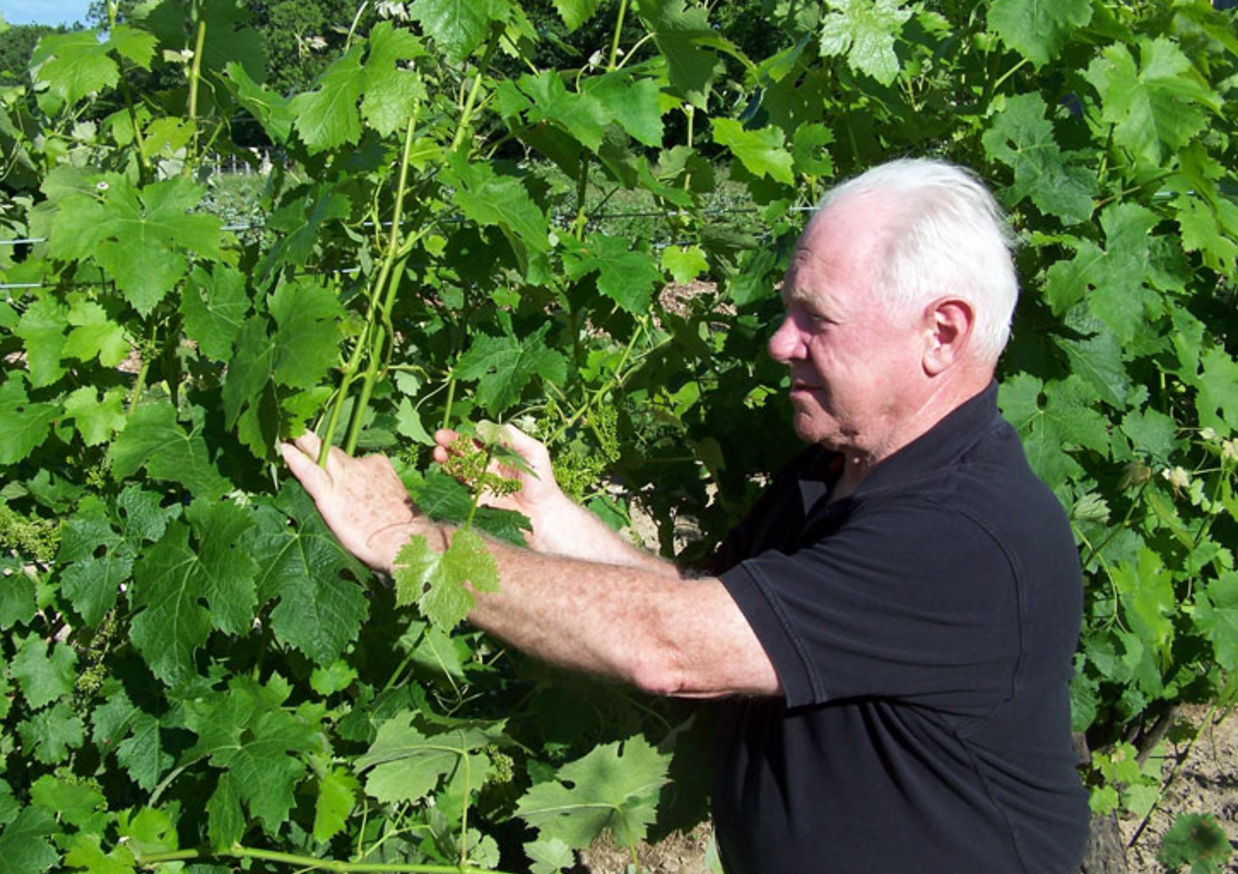
In 1973 John and Ann Martini moved their family from Baltimore to start Anthony Road Winery on the west side of Seneca Lake in the Finger Lakes. Today they work the estate with three of their four children and their extended families. All of the vineyards are managed by John and Ann's son Peter Martini, using Vine Balance, New York State’s sustainable viticulture program.
We talk to John Martini about the evolution of Finger Lakes and the challenges of developing a family business.
Christopher Barnes: How did you and your wife get into wine?
John Martini: She and I both grew up in North Jersey. Our fathers worked in New York City. Actually, she was the girl next door. Actually back door. Our septic system emptied into their basement.
We were living in Baltimore at the time. A friend from up here in the Finger Lakes who we had met previously said, "You ought to quit your job and grow grapes." We said, "Oh, okay."
I had a pretty good job traveling around the country selling ozone and oxygen generators. We bought this land in 1973. I found out pretty quickly that you didn't get any money out of grapes at least for several years. I'm not sure you ever do. I had to go get another job and Ann took care of the vineyards. We grew for the Taylor Wine Company initially and we planted the French-American hybrids that they were interested in at that time.
As that market started to change, the consumers started to go for vinifera, Chardonnay. A lot of people would order Chardonnay and I'm sure a lot of them wouldn't know whether it was going to be red or white. The other side of that coin is they probably got a white wine that they thought was Chardonnay, but it could have been anything. New York was not at that point interested at all in growing vinifera, except for Dr. Frank who said, "You can do it." Slowly, some growers started to plant the vinifera varieties.
Before '89, we started planting in '87, '88 some vinifera varieties, Riesling, Chardonnay. We started the winery in 1989. Actually, we opened our doors in '90, because the Taylor Company had changed a lot. It was sold to Coke, and then was sold to Seagram's. It was sold to Vintners International. Each time, the market for our grapes was diminishing. We either had to get out or get deeper. We chose to get deeper. We started the winery and opened the doors in 1990 based on Chardonnay and Riesling.
Then, we started planting vinifera more vigorously. Cab Franc. With a friend from California who bought some land on the next road and put in the capital, we planted 50 acres of vinifera varieties, including Gewurtz, Merlot, Pinot Gris, more Cab Franc, and Chardonnay.
When we started across the street from where we are right now in our old shop, we converted that to a winery. We built the tasting room here in 1998, because we were running out of space for one reason and it was funky. In fact, it was described at best as rustic. In 2000, we built a new production facility. In 2000, our current winemaker, Johannes Reinhardt, joined us and we have not looked back. We are at right now about 14,000 cases of wine. We sell grapes to other wineries as well as our own. Roughly 50/50. 50% comes here and 50% we sell, but that changes each year depending on the size of the crop.
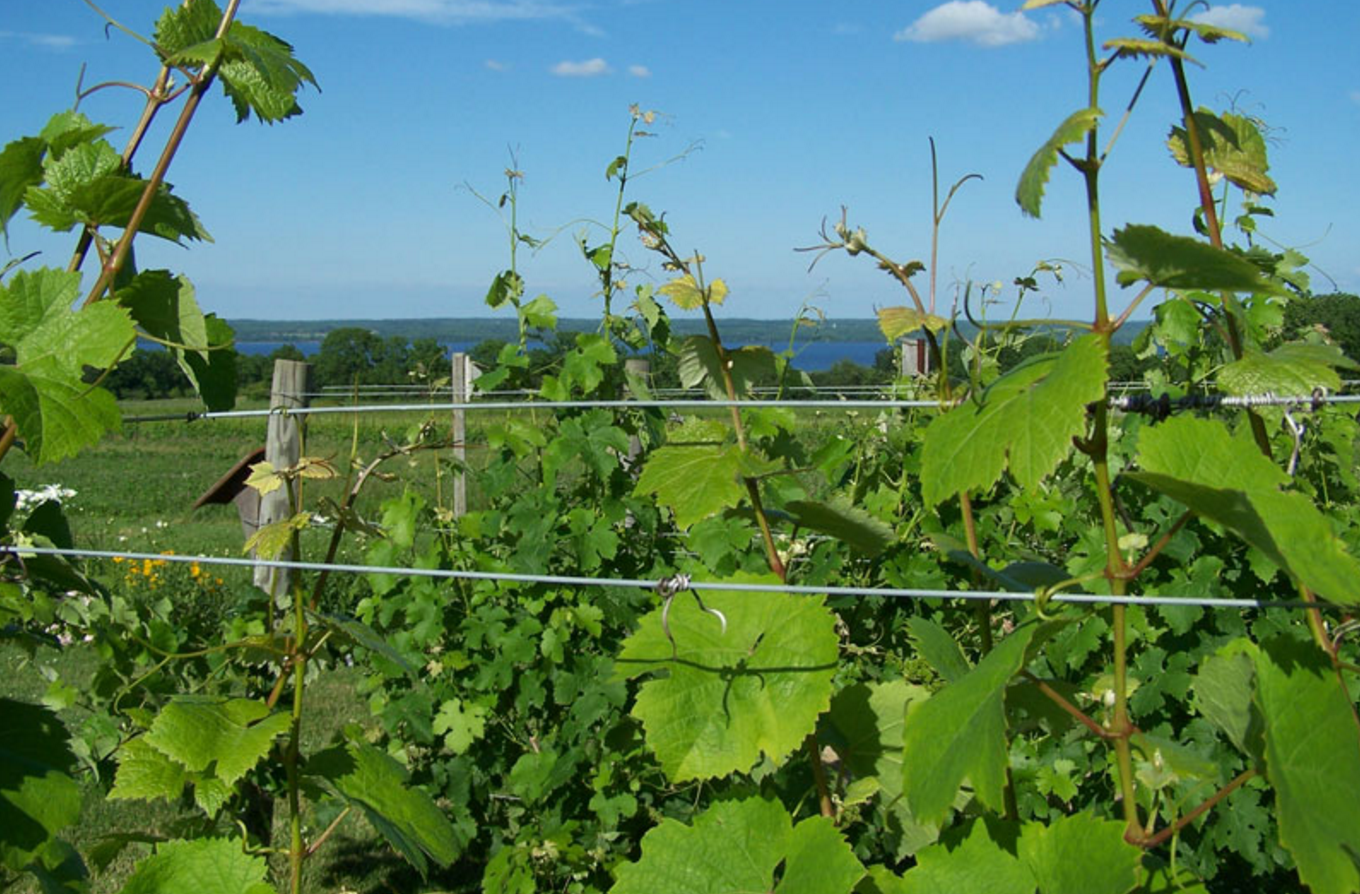
Tell us about the Finger Lakes region and Riesling and a little bit about the soils you have here.
Okay. We came into the Finger Lakes region primarily because that's where our friend was and we knew some people here. Ann's parents lived in Geneva. We bought this farm primarily because it was recommended by the Taylor Wine Company. They were looking at this region. No grapes had been grown here prior to our arrival and Taylor, who started planting up the road from us. I think it was just luck but I'm sure they knew something.
The soils here are high lime soils, so that's conducive to growing vinifera. They were not encouraging vinifera growth or plantings, but in hindsight it's worked well. Our soils are all moderately well-drained. The soil at the top of the farm, up by Route 14, is called Honeoye. It's high lime, moderately well-drained, and as we go down towards the lake, the soils are Lima. They are a little heavier, but they are still moderately well-drained, high lime soils. We found them to be conducive to vinifera.
The other thing that's had an effect is climate change. When Anne and I started in '73, we had a lot of 15, 18 degree below zero days and sometimes weeks. The last four or five years, if we've gone below zero, it hasn't been far. Maybe -1, -2, -5. Grapes, even vinifera, can tolerate that, especially if those temperatures happen in later January or early February. If they happen in early December, then we are in trouble, because the grape has not acclimated to the cold. We found that the whole region is conducive to growing grapes. The hillsides going down towards the lake are our frost-control. Basically the cold air sinks and if you plant in a gully, it'll collect down there and it will cause damage. The way we've planted our grapes, the cold air coming down the hill will head towards the lake and that provides a modicum of frost control. It may make a one or two degree difference.
Talk a little bit about the vineyard and the soils that you have here. What attracted you to that?
I have to say it was just dumb luck. Ann and I grew up in the suburbs of New Jersey. We didn't farm anything. We did not know anything about soil, about what it takes, whether one soil would be better than the other. What I'm telling you now is stuff I've learned over the 30-odd years I've been here. I guess that's 40 years, right? '73 to '13. Well, as I said, Taylor had recommended this region as a place that was conducive to growing grapes. We bought the land and we started planting the grapes. It was, in a lot of respects, luck. What I'm telling you is just that now I understand it.
When people say they want to move here and grow grapes, I tell them, "Do your homework. Look for soils that I've described earlier. Well-drained, higher lime. These are conducive to growing grapes." It's the best kind of soil that you can get. Sometimes, I refer to it as vegetable land, because it can grow anything. You can grow apples, you can grow pears, you can grow watermelons if you want. Well, maybe not watermelons, but beans and carrots. In farming, it's always the quality of the soil. Even though these soils are classified as well-drained, we do have a lot of drain tile that we've put in to help the drainage, because they were laid down by glaciers. We have pockets of clay. We have pockets of sand.
Actually, where our buildings are right now, there's a sand layer that runs north-south through our farm. Apparently, at one time, it must've been the lake shore, because the sand is very fine. When we would plow through it, the plows would sink in and you'd have to raise them up and get out. It was luck that got us here and we are taking advantage of it.
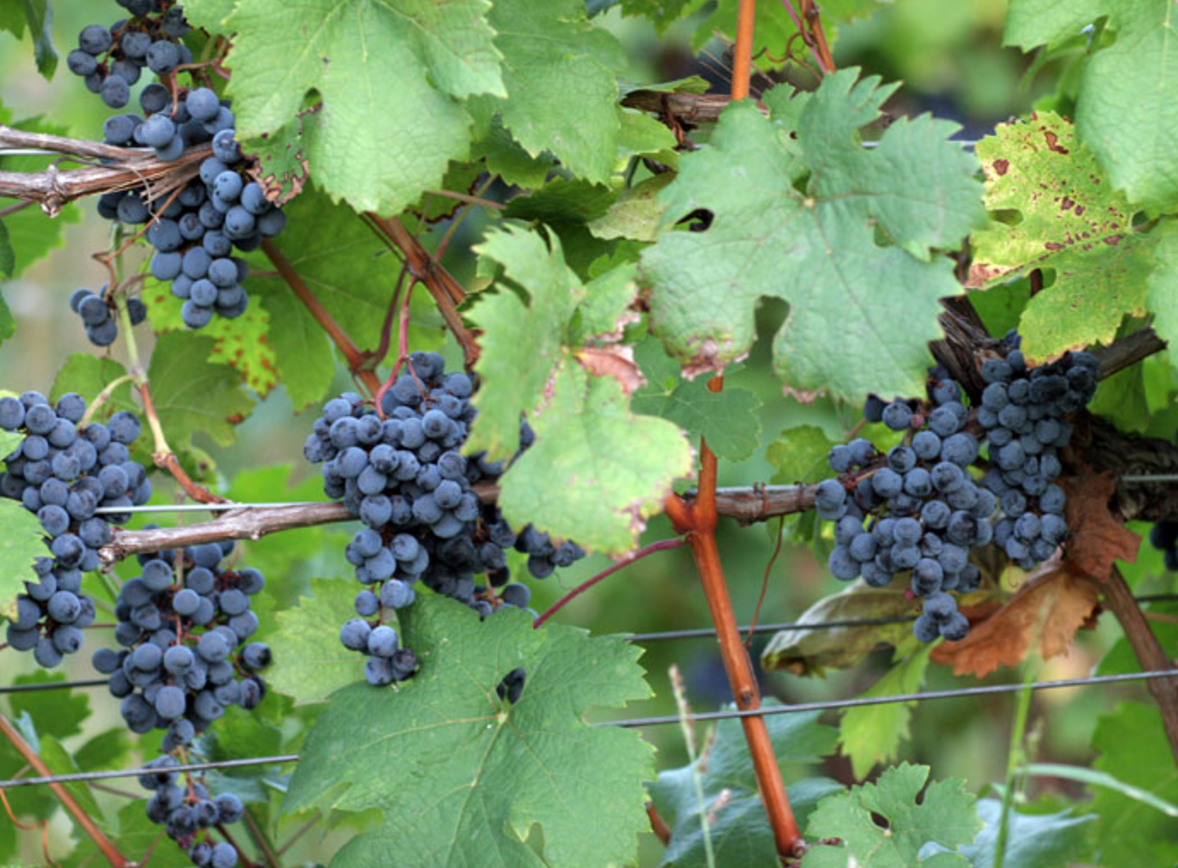
Tell us a little bit about why the Finger Lakes is known for Riesling. Germany is also the other famous region that has world-class Riesling. What is it that's similar about this climate and the climate that produces those fantastic vines in Germany?
What do we have that's similar to the Riesling growing regions in Germany? For a while, especially 20 years ago, we worried that our Rieslings didn't taste like German Rieslings. It didn't occur to us that the Rheingau and the Mosel, they don't taste the same. We've basically let the grapes lead us. Grow the grapes, don't try to make the Riesling in the cellar, but grow them here.
Now, why are we getting world-class Rieslings? Soil. These are calcareous soils, maybe not as calcareous as the German. They are on the hillsides going down towards bodies of water. We have similar climates. We probably get colder in the winter than most of the German regions, but as I said earlier, climate change is changing that and we don't get the deep cold. Riesling is fairly tolerant of cold, much more tolerant than Cab Sauvignon or even Chardonnay to a certain extent. It's been, I think, an evolution. We are a cool climate. That's an important part. Growing Riesling in California, where you have warm days, you get too much sugar and you don't retain the acidity. Unless we look at California in the Anderson Valley, which is up high, in Mendocino County, there they start to get Rieslings that are attractive, to me anyway.
We are a cool climate. We get acidity. We get enough sugar to make the alcohol that we need to make a sound wine. In fact, we do better than Germany does in a lot of respects. We had no trouble getting to 21, 22 bricks. Without having a lot of botrytis or something like that and still retain the acidity necessary for the crisp wines that people come to associate with Riesling.
One of the interesting factors is that people associate sweetness with Riesling. In Germany, there's a whole range. I always tell people the Germans always send us the sweet ones, so that's what the American consumer assumes Riesling is. As we develop drier Rieslings, people go, "Wow. I like that. It's a much better food wine." Riesling is a neat grape to grow, because it does range from dry all the way to a TBA, where you've got outstanding dessert wines that you can make with it.
Tell us about some of the other grapes that you think grow well here. Obviously, the area is famous for Rieslings, but you make 18 wines. You've done a lot of experimenting. What's worked for you?
Right. Looking to the future, what are we going to be growing? I'd say Riesling is winning that race, but what other varietals will we be looking at and what are we growing now that will probably hang in there? We've got Lemberger in the ground. We've got Cabernet Franc in the ground. Those blends or blends of those grapes, we feel make an excellent wine. We do not get big tannins. We had Cab Sauvignon in the ground. We took it out. We could get it ripe two years out of 10. There's no point. Let it be grown somewhere else so they can ripen it year in and year out. We have not planted, but we are thinking about Zweigelt. We are thinking Dornfelder, some of the other German reds that are out there. We've got Pinot Noir and Pinot Gris in the ground. In fact, Pinot Gris is this vineyard right behind me, the first five or six rows are Pinot Gris. That's doing well for us.
Actually, if you look at it, we are becoming very Alsatian. Not on purpose. We are not thinking, "Oh, we are Alsace. We are going to be making Alsatian wines." That's where we are going with Riesling, with Pinot Gris, with Pinot Noir, with Gewurtz. We've got Gewurtz in the ground. We can make some really nice Gewurtz. Very strong. Now, does the public like it? Gewurtz is a love it or you hate it. It's too strong of a flavor, but we can grow it. That's the neat part.
Rather than Germany, I would say for whatever reason, it's Alsace that we are going to be compared to.

John, what is the philosophy of winemaking at Anthony Road?
Our winemaking philosophy basically consists of, "We are going to give you what the grapes give us." We make every effort to make quality wine, but our first effort is to grow quality grapes and to give Johannes, our current winemaker, all the equipment that he needs to do that. To handle the grapes gently. Rather than pump the must into the press, we send it up on an elevator, conveyor system. We have a cold room that allows us to do some cold soaks that lets us get some color out without fermentation starting. We can put 20 tons of grapes in that cold room.
We try to treat them gently. We try to treat them minimally. We fine them with the casing, egg-whites, and/or clay Bentonite. Most of the whites are fined with Bentonite and not with the casing or clay. In some markets where I've sold grapes, we get vegans who come up and say, "Do you have any vegan wine?" The question when it was first posed to me was, "What do you mean vegan wine?" Then, it occurred to me when they explained it that casing or egg-whites would not be acceptable. Now, I point out the wines that those fining ingredients were not used.
We have a bottling line that allows us to either cork-finish or screw-cap. We like the screw-cap. It gives us more control, better keeping quality, especially since Riesling is our primary grape that we like to retain the fruitiness of the wine. The screw-cap does a great job of it. It's more convenient for the consumer. I know that when you go out to a restaurant and you have a fine bottle of wine and you want to hear that cork pop, "How about a glass of wine?" Click. "Honey, do you want a drink?" When you use a screw-cap, not so much romance, but a better way to keep wine sometimes, especially if it's to be consumed in a short period of time.
Okay. Great. Talk a little bit about the wines that you personally enjoy. Which one do you drink at home?
What do I drink at home? We only keep the bottles in the tasting room for two days and then they go to the top shelf and the staff is allowed to take them home. I find that I drink more whites than reds, and dry whites more than sweeter whites. That's only looking back. It's not because I make a conscious choice that I'd rather drink this than that. I drink more of our Pinot than our Cab Franc Lemberger. I drink the dry Riesling as opposed to the semi-dry. The Pinot Gris, the Chardonnay. It's trite to say I drink whatever's closest, but in a lot of cases it is.
What other wines around the world do you get excited about? Are there regions that you've been to that you're excited about that have influenced you?
That's tough. Actually, Ann is the one who's gone around the world. I go to California. My friends in California, the Young family. I have a brother in the business in Sebastopol. I really enjoy and buy his Sauvignon Blanc. It's an excellent wine, especially for the price. He gives me a good deal, but the price even without the good deal is a good deal.
Again, I'm not into, and this is kind of negative, the Pinots from California unless they are from Anderson Valley. Some of the Pinots that I've had up there, the sparkling wine from up there, the Rieslings, I really enjoy. I think that's because I'm from a cool climate, that's where my palate is. To go and try and drink a big Cab from Napa, it's tough for me in a lot of respects. I prefer the lighter, more food-friendly wines that don't overwhelm the meal.
I tell people when I'm trying to sell wine, "I'm in the wine business, but I don't necessarily want to taste the wine. I want to taste the food." The advantage of having wine with a meal is that wine and that acid cleans your palate. Each bite of food should be as fresh and refreshing as the first bite. The more important part about it, having wine with a meal, is women get more beautiful, men get more handsome, and everybody gets smarter. This is a good thing.
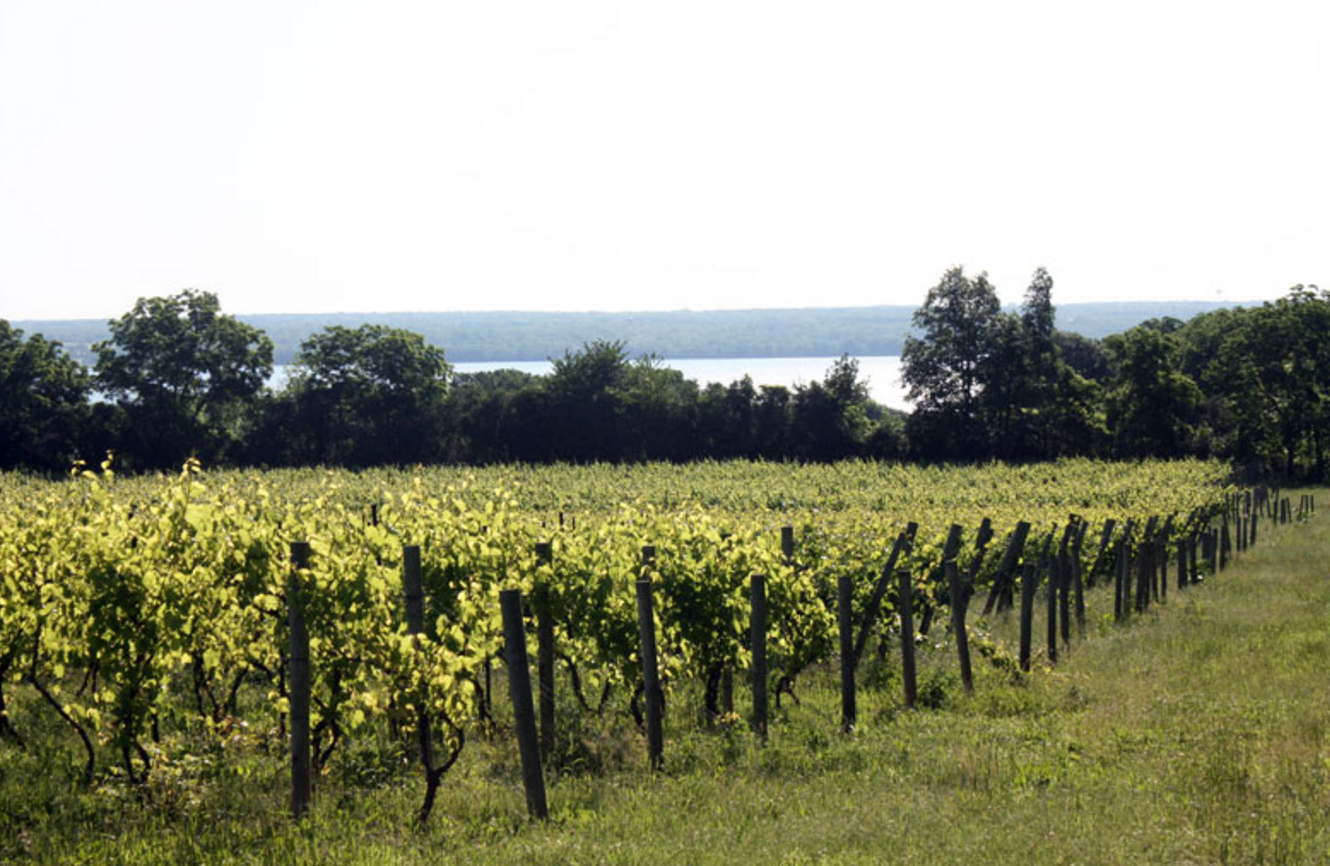
You make 18 different wines. Tell us a little bit about the experimentation that's gone on over the years.
This is a new growing area in a lot of respects. While grapes have been grown in the Finger Lakes for well over 100 years, the switch to vinifera, what works and doesn't work, is a big experiment. It's an experiment that I've told many people my grandchildren's children may know where we should be. You don't go to Burgundy and ask for a Cab, because over the eons they've figured out what grows well, what they can sell, what works with their food. The same thing is going to happen here in the Finger Lakes. As I said earlier, we took Cab Sauvignon out of the ground, because we don't think we are the place to grow it. I'd like to plant more Pinot Noir. I'm liking how we are evolving. They are lighter, but have nice flavor components.
Things are going to go in the ground. Things are going to come out of the ground. There may be some grapes on the horizon that we are not aware of and may go in in 20 or 30 years. There's a lot of experimentation going on in breeding to try to breed in resistance to diseases, et cetera. Those grapes may make some great wines in the future. Like I said, at one point, we've been doing this for thousands of years and we are still learning. There's a lot to learn. If you think you've gotten to the top, then you are on your way to the bottom. We just have to keep pushing the envelope so that we make better and better wines. Wines that go with food and encourage people to consume them with food, with families.
It's a great experience. I grew up in a family that did not drink wine as a matter of course. We had wine at Thanksgiving. The wine was Cold Duck if I remember, which was not exactly in hindsight, quality wine, but as a 15 year old, "Whoa, this is cool." Our children grew up, not always necessarily drinking wine at the table, but wine was on the table, wine is on their tables at home now. We are seeing an enjoyment of wine that I think bodes well for the future. It's a food. Enjoy it with your family or with friends and don't abuse it.
Could you just tell us a little bit about your Rieslings and the flavor profiles of them?
We grow all our own fruit. Our goal is to make wines with a good acid backbone, I guess is the best way to describe it. Not an overwhelming acid backbone. Everything about wine is about balance. Not just balancing the sugar and the acid, but also the alcohol that may be there or potentially be there. We are aiming for food wines that will go with a variety of meals. One of the neat things about Riesling is that you can run the gamut from dry all the way to desserts. We have our primary offerings which are dry, semi-dry, we call them semi-dry, semi-sweet. The International Riesling Foundation is calling them medium-dry, medium-sweet, which is fine. To me, it says the same thing, I'm just used to saying it the other way.
We've experimented in what we call spontaneous fermentation. It's challenging to try to convey to the consumer what that means. We just crush and press the grapes and let whatever yeast is in the building, on the skins, do the fermentation. It takes a longer time period for that to take place. The fermentations go maybe a month or six weeks. We get a very complex Riesling out of it. You can get the Riesling part, but the other flavor components in it are more complex. There's a lot going on, compared to our dry, which is a commercial yeast. Both excellent wines, just to me, one is more interesting. I call it "spontaneous," we call it "art," because the label is a painting that my wife had done when she was in college. Actually, it works well because it's a painting of a crowd of people and basically we had a crowd of yeast doing the work, so it works well.
We have made a low-alcohol Riesling in 2009. Got a lot of great numbers and accolades. We haven't done it since. We do what we call our "Martini Reinhardt" series that we make only when we have exceptional quality. Martini, that's us, we grow the grapes. Johannes Reinhardt is our winemaker. The fruit is harvested. Johannes and Peter, our son who manages the vineyards, will go through and decide, "Okay, maybe this block. Let's drop a little crop. Try to increase some of the flavor components in the grapes." When they come in, we sort so that only the finest fruit, cleanest, most uniform go into the pile and get fermented. Then, the decision is, if we haven't made it yet, "Is that going to be suitable for Martini Reinhardt or not?" Sometimes, it is. Sometimes, it isn't.
We usually only make 100, 90, 150 cases of it. We don't make it year in and year out. I like to say the consumer isn't stupid forever. If you make a great one one year and say, "Oh, we could sell this really easily and make more the next year," but it's not the same quality, that's not fair. We try to produce it when we can, when the grapes give us the product.
Where did we get our winemaker? A lot of times I say, "God dropped him on us." In a lot of respects, it's true. We had a partner when we started and he left for another job. I was looking for a winemaker and a friend recommended Johannes. He had worked here in the Finger Lakes previously. We called him up. He was working at the time I called him at a winery and vineyard in Southern Germany. We invited him to come over. We never tasted a wine that he made, we just talked about philosophy. We had him come and he has been here since 2000.
Johannes is from the Main River region. Their grape is Silvaner. He did not make Rieslings before.
Interesting. Tell us a little bit about what you recommend for food pairings, especially with the Rieslings.
With Rieslings, if I'm on the drier end, I like it with flounder, scallops. More so than with chicken if you will. When we get into the semi-dry styles, I'm inclined to now consider chicken with some sauce that may have some stronger flavors. Maybe a tiny bit of heat. As we get into sweeter Rieslings, more heat and more spice.
My preference, as I said earlier, is to have dry Riesling. I'll drink it with a cream sauce pasta, because of the acidity to cut that creaminess. That works well for me.
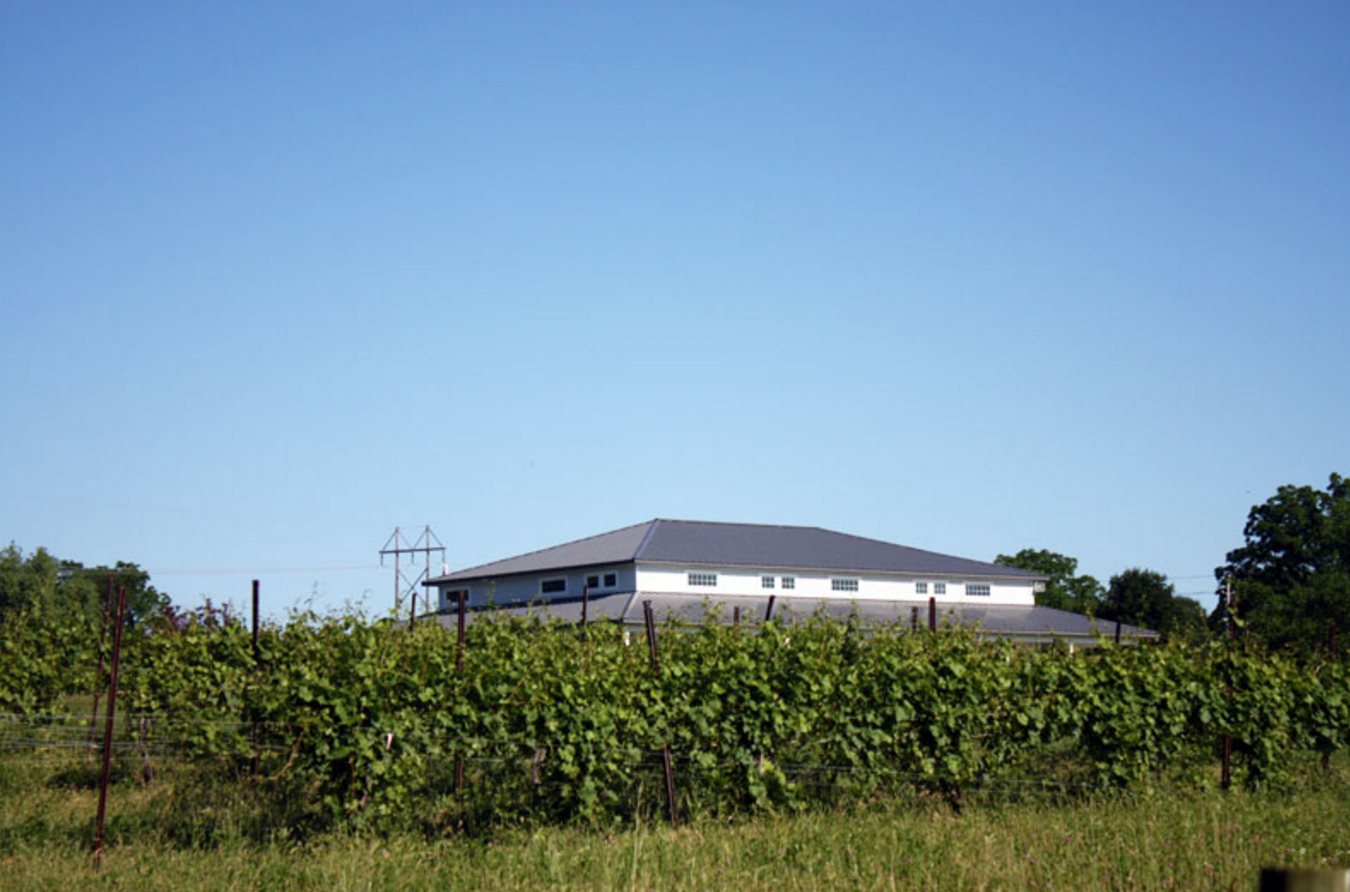
Tell us, is there anything that you feel that you've tried to accomplish at Anthony Road that's different from some of the other vineyards in the Finger Lakes?
I think what I find fascinating, it's not Anthony Road necessarily, but I'd like to consider ourselves part of it. There's a camaraderie here in the Finger Lakes between the winery owners and the winemakers. Not all of them, but most of them, and we work together. We are always going to be recognized by the poorest quality that comes out of here rather than the best quality. We have to work together to push that envelope. I'm proud of the fact that Anthony Road is doing that with other wineries. Johannes and myself going out there and trying to promote, not just Anthony Road, but the Finger Lakes as well.














